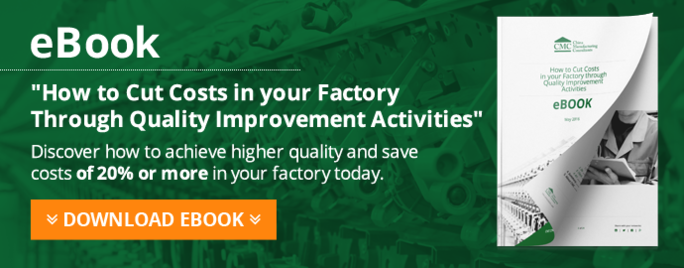One thing we often ask factory quality managers is, “how much do external quality failures cost you? And what about internal failures?” Very few actually track these data and can give us a good response.
Let's explore in more detail what external quality isues are, how they can affect us, and what we can do to improve quality in our factories...
What Are External Quality Failures?
External quality failures are quality issues detected by customers after the goods left the factory. Its fully loaded costs are always under-estimated by manufacturers. Here are three examples:
- A customer invoiced a chargeback for relabeling some mislabeled cartons.
- A good customer decides to switch to another supplier because of repeated quality issues.
- A good customer is upset because of a quality issue and the factory rushes their next order to make up for the issue. It messes up production planning, production efficiencies drop, and some other customers are unhappy for getting “bumped”.
There are two types of external failures.
1. Products fail after delivery to customers
Here are two examples.
- One screw is missing in a furniture set that is offered for Christmas in the US. The immediate cost is at least 25 USD (a customer service officer processes the complaint, a screw is sent by Fedex, etc.) and the long term cost is a very disappointed end consumer who will remember this for a long time and might describe his experience to countless other people on the internet.
- 5% of the batteries of a batch of mobile phones sold in the UK are exploding. The retailer notices this problem early and forces the importer to take the whole batch. The chargers need to be replaced. The phones cannot be sold in another channel unless their printings are modified. It is cheaper to throw them all out. It is an entire loss, and the retailer will need a lot of convincing before they become customer again.
2. Products fail in the field
Again, I will give an example here.
The accelerator pedal in a car sometimes doesn’t go back up. It causes several accidents. The car maker launches a worldwide recall. The total cost is in the billions of USD in law suits, lost reputation, and lost sales.
Conclusion
The conclusion is that, at the very least you need to ensure proper final inspection in the factory. Bad quality must be stopped. Studies have shown that letting your customer catch issues will cost you 10 times more than catching them yourself and dealing with them.
Now, does it mean that inspecting the products after they are completed is good business? Not exactly. As we’ll see in the next articles in this series, it makes more sense to catch issues upstream… and even to take measures to prevent them altogether.
What's your take on avoiding external quality failures?
Does your factory, or supplier's factory actively seek to reduce these by performing enough inspections? How do they achieve it?
Please let us know if you have any questions or issues to share with our experts and community by leaving a comment below.




